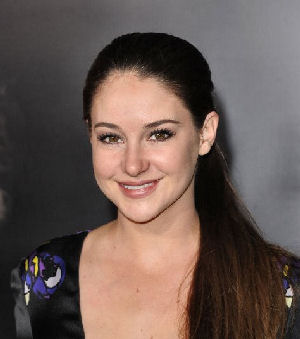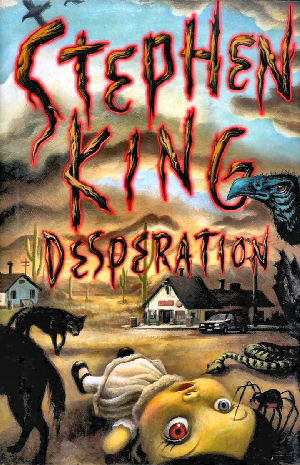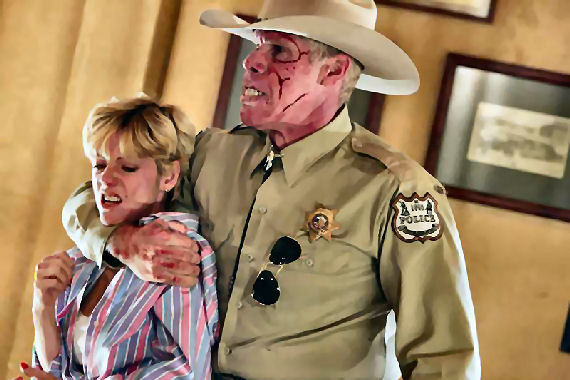
YA books being made into movies are big business these days; every publisher and every producer hopes to find the next Harry Potter or Hunger Games. Because our sympathies often lie with the young woman (Quick! Who’s the best secondary character in the Harry Potter movies? Is it Ron Weasley? Is it Hagrid? Is it Professor McGonagall or Snape? Heck, no, it’s Hermione Granger!) character/protagonist rather than the young male, I’m guessing that’s why Divergent—featuring a sixteen-year-old woman, basically like Hunger Games—was made. There are many similarities between Divergent and Hunger Games; the first and most obvious is the young female protagonist; the second is the post-apocalyptic world (or USA—to many Americans, the US is the only world that matters); and the third is teenage angst. (Hey, having been a teenager, I understand that very well; unfortunately, teenage angst is like sharing your dreams—it’s only interesting to you who are in the throes of it—unless you are a teenager yourself.)
But the teens soak it up and wallow in it; judging from my sisters’ behaviours when they were teens—of course *I* never engaged in any of this nefarious behaviour—everything in the world is drama; the world is against you (especially parents) and so on. Darn it! My first book was a YA novel, done for the 3-day Novel Competition, but I never thought to fill it with teenage angst! Wotta maroon, as Bugs Bunny might have said. And I made my protagonist a young man instead of a young woman. Had I been a bit smarter, the next teen angst movie might have been mine, and I might have been forced to contemplate the problem of too much money. Sigh.
Oh, well. I learned one thing from this (I do try to learn at least one thing a day; education is a life-long process): I learned I’ve been mispronouncing the title for half a century. It’s “die-vergent,” not “div-urgent.” Who knew? (Obviously, everyone else.) Anyway, the movie is based on the book by Veronica Roth, which was published by HarperCollins. I must confess I have only read a part of the book, but what I read wasn’t badly written—as far as mechanics go. If the movie hews to the book, then it was indeed not well written as far as story and character go. (I differentiate among several categories—which aren’t at all rigid, and flex according to time and mood—like “Superb,” “Well written,” “Okay,” “Not badly written,” “Badly written,” and something like “Ugh,” or “Keep away!” Here’s the deal as far as I’m concerned: because it’s written for teenagers and is full of teenage angst, it’s not a book that would really interest me as an adult reader. As a movie, it has to interest both teens and adults, because they’re putting it out in competition with movies for adults—not “adult” movies, which are usually something else indeed. (And many of the so-called comedies that “contain adult material” usually contain very juvenile and childish humour rather than adult humour.) So it’s in competition with all other non-kids’ movies, as far as I’m concerned. I understand it made a bunch of money, but I doubt it has, in the terms of the trade, “legs.”
This is the story, as told by a voice-over by our protagonist at the start of the movie: more than a hundred years ago the whole world was more or less destroyed by wars and other stupidities, so the remaining people (who, coincidentally, all happened to live in Chicago, of all places) decided that they needed to build a Utopian society where no wars and bad things like that would ever happen again. They divided all of the remaining people into “factions,” five of them (because obviously, in Utopia, all people can be divided into five categories. Whoops! Was that my outside voice?) called (in alphabetical order) Abnegation—the selfless ones who take care of everyone else; Amity—the peaceful ones, who happily grub in the dirt and grow all the food; Candor—the honest ones, who always tell the truth even though it might hurt (and these people are the lawyers?); Dauntless—the brave (and stupid, judging from some of the stuff they do) ones who defend society (from whom?); and Erudite—the learned ones who think everyone else is dumber than they. In common with almost all the “post-apocalyptic” film futures, there is no explanation why Chicago alone survived; no explanation of how the wall around the entire city got built; no explanation why, a hundred years after the establishment of these factions, everyone is still happy with being divided into one of five categories—no, wait! There are the factionless, equivalent to our homeless, who live on the street or in abandoned buildings, and are fed by the charity of the Abnegation faction. Huh? There are homeless in this “perfect” society?
I guess we’re supposed to look at this as allegory, but I look on it as failed science fiction. To the general public, who call it “sci-fi,” anything goes… you don’t have to be factual, logical or scientifically rigorous; but to those on the inside, those who love science fiction as opposed to “sci-fi,” it is the most rigorous of all fictional categories. Therefore, any book or film that tries to be science fiction—which, by the way, encompasses almost all “future fiction”—but lacks the rigour can be said to be “failed science fiction.” Okay, enough lecture, back to the movie.
Since Abnegation serve everyone selflessly, they are the obvious choice to run the factions; our heroine Beatrice Prior (Shailene Woodley), who just turned 16, will have to undergo aptitude tests (in the book that’s what they’re called; in the movie it’s just the test everyone takes at 16) to see what faction they are suited for. Most people—based on the test—sign into the faction they were raised in, but that’s not mandatory; you are free to choose your faction—but only once. “Faction over blood,” is the saying; whatever faction you choose is where your loyalty lies from then on. When you choose your faction you can also choose a new name if you want to. Again, it’s yours from then on. The test is always supposed to tell you what faction you belong to, but in Beatrice’s case, the results are “inconclusive,” as she has equal bents for Abnegation, Dauntless and one other (from the book, not the movie; there are many things the movie doesn’t explain). She is warned by her testere, Tori (Maggie Q) to keep this quiet and say that the test showed Abnegation or someone would try to kill her. She is Divergent. Beatrice’s parents, Ashley Judd (Natalie) and Tony Goldwyn (Andrew—leader of Abnegation) expect her and her brother Caleb to become Abnegation, but both young people surprise them: Caleb becomes Erudite and Beatrice (now called “Tris”—pronounced “Triss”) becomes Dauntless.

Cutting a long story short, Tris meets Four (Theo James), the leader of Dauntless, and his second-in-command Eric (Jai Courtney), begins training to pass her initiation—if she doesn’t pass she’ll become factionless (homeless), and if they learn she’s Divergent she will be killed—one person was found out very recently and his body was found at the bottom of a crevasse inside the Dauntless’s home building (don’t ask… again, a lot of stuff is not explained. Like why are there what looks like ventilators—fans—attached to the sides of many of Chicago’s buildings? Actually, I figured that one out myself: Chicago’s called “The Windy City,” right? So these are probably wind generators. But why are they not attempting to repair all these half-destroyed buildings? Oh, well.) Tris discovers that the Erudite, led by Kate Winslet (I mean Jeanine) are spreading false rumours about the Abnegation faction—like, they’re keeping a lot of supplies for themselves, breaking all kinds of laws, etc—and Erudite wants to take over as leaders of Chicago and all the factions.
And so on. Tris doesn’t feel like she really belongs anywhere, war ensues between the factions, yada yada and yada. According to the Study Guide for the book (yes, there’s an official study guide) the book is about choice. (That’s the short version; any time we’re told a book is about something like that it means it’s short on character and plot, in my opinion.) You can pretty much figure out where the movie’s going from minute to minute; they‘re also trying to position Shailene Woodley to take over as the new Jennifer Lawrence. I’d never heard of Shailene Woodley, but it turns out she’s been in lots of TV series I never watch, and quite a few TV movies I’d never watch; fair enough, except—she’s no Jennifer Lawrence. Lawrence is delightful, both on screen and as herself. I find Woodley somewhat lacking in charisma, alas. However, you can see, if you look up the publicity photos from Divergent, they mostly make her resemble Jennifer Lawrence.

Aside from Ashley Judd, whom I like a lot as an actress, but who has darned little to do in this movie, I think Jai Courtney is the most watchable actor in this film. He has a lot of that charisma that makes Liev Schreiber a delightful villain, and I look forward to his turn as Kyle Reese in the upcoming Terminator film. Kate Winslet has little to do here but look and act menacing. On the other hand, whatever the acting and the writing lack, some of the CG is amazing, like the opening aerial shots zooming in from the grassland that used to be Lake Michigan (complete with foundered ship), through and over the wall around Chicago and between the partially-ruined skyscrapers and over the Chicago River—dried out now; as well as a sequence where Tris had to take a zipline from the top of what was (I think) the Sears Tower through some holes in buildings—at night—as part of her initiation. Terrific stuff—but a movie is more than just its CG; look at Sandra Bullock’s Gravity, which was mostly CG—and fabulous 3D CG, but the movie itself was her character and how she coped.
I might rent the sequel to this film when it comes out but, more than likely, this was enough for me. I’m sorry, but the film just didn’t work for me or the Beautiful and Talented Lynne Taylor Fahnestalk, with whom I watch nearly all my movies. Actually, I’m gonna add another category to the ones above, namely “Meh.” Which is the impression this film gave me.

I now move on—because I was looking for something I hadn’t seen in a long time to watch on our new (to us) 3D TV—our old TV was 720p and this one is 1080i, so everything looks very sharp and strange to us (not only did I get a deal on the TV, I sold the old one for enough to pay nearly half the cost. You wouldn’t believe how cheaply I got this TV!) I have to rent 3D movies; since they’re anywhere from $20 to $55 (I checked today at London Drugs), we only own two, which I got off Craigslist for under $10 each. I’ve literally waited since the 1950s for a 3D TV (because they told me all my life we’d have the darned things!) But that’s beside the point; this movie wasn’t even a Blu-Ray; it’s a DVD of the TV movie Desperation, from the book by Stephen King, which we fondly remembered reading, and watching. I’d picked up the DVD from a bargain bin a couple of years ago, but never popped it in. Fortunately, the PS3 upscales DVDs to pretty good quality.
The movie has a stellar cast, starting with Tom Skerrit and Ron Perlman; it also stars Charles Durning and Matt Frewer, plus Henry Thomas, Steven Weber, Kelly Overton and Annabeth Gish. That, plus it was written by King from a novel by King, directed by Mick Garris, who’s done several King TV movies as well as, if memory serves, a Riverworld. So how could we lose?
Briefly, the story is this: married couple—Mary and Peter Jackson (Annabeth Gish and Henry Thomas), driving his sister’s car from New York to Oregon, get pulled over by a cop, Collie Entragian (Ron Perlman) outside Desperation, Nevada, a mining town near a giant pit mine. Entragian points out that their rear license plate is missing and offers to move the front plate to the rear for them, assuming Peter (“I loved Lord of the Rings,” says Entragian to Jackson) has a tool kit. When they open the trunk to get the tool kit, Entragian finds a large Ziploc bag of pot with a happy face sticker on it and arrests them, throwing them into the back seat of the police cruiser behind a wire screen. On the way back to town, Entragian displays erratic behaviour, breaking out into violent outbursts and Tourettes-like bursts of words like “Tak!” (Jackson: “Why did you say ‘Tak’?” Entragian: “I didn’t say ‘Tak,’ you said ‘Tak’!”) When they arrive in town, it appears deserted, except for a number of bodies on the sidewalks. When they walk into the police station, they find the body of what appears to be a six-year-old girl on the stairs; (*minor spoiler*) Entragian shoots Peter Jackson in the stomach and takes Mary upstairs to jail.
Upstairs they find a number of cells occupied already; Ralph, David and Ellie Carver (Matt Frewer, Shane Haboucha and Sylva Kelegian) are in two cells; Tom Billingsley (Charles Durning) is in another. It appears Entragian is collecting people; later, we see him arrest famous author John Edward Marinville (Tom Skerrit), who is making a cross-country tour on his red- and cream-coloured soft-tail Harley, for possession of marijuana; oddly enough, the Ziploc bag has the same happy face sticker as the previous pot possessors!
Here’s the main problem with this movie (for me) and it’s the same problem I have with the King movies that mention religion (like The Stand): David Carver (Entragian calls him “the prayboy”) has, on his own hook, taken up religion, reading the Bible and praying several times a day. First off, though it may be my atheism, I find that King’s version of God is an egotistic bully, as expressed in this movie and The Stand. In this movie, we’re told that “we’re put here to worship God and to serve Him.” And this actor (Shane Haboucha) never for one moment makes me believe that David believes this stuff. So although Entragian has killed his little sister (and later does other things—no spoilers this time—to David’s family), I never believe either his piety or his anger at God. We’re told—as we’re told in The Stand—that God does things for his (or His) own reasons and, even if we don’t like ‘em, we should just go ahead and worship Him anyway. In The Stand He kills the most pious person on Earth, Mother Abagail apparently just because He can. He does similar things in this movie. If I can’t buy a) the crappy things God does in the movie and b) the piety of the main worshipper, how can I buy the movie itself?

That’s the main problem I have with this movie; when it goes from detailing the creepy things that Collie Entragian does—and he seems unstoppable—to detailing the creepy things that God does, then you’ve lost me. You’ve lost the suspense, the willing suspension of disbelief and all else. Tom Skerrit’s character has an epiphany and goes from atheist to believer, and I can’t buy that (not only because of the God thing cited above, but also because it happens in like a minute or two) either. Right about then King and Garris lost me; I ceased worrying about the characters and their plight. Which means I stopped caring about the movie. The best actors in this movie are Ron Perlman and—not Tom Skerrit, whom you’d think would be best—but Steven Weber; the others (maybe with the exception of Charles Durning) are stick figures. The other problem is that the makeup, supposed to show the rapid disintegration of the villains (first Collie Entragian, then one of the Carvers) is terrible. It looks like makeup; it doesn’t look real in any way. Now, maybe that’s the fault of my TV—after all, when this film was made there were no high-definition TVs; or, if there were, they were well out of the reach of the average viewer, so the producers/makeup people didn’t waste any more time on makeup than they had to. Except that this makeup was by Greg Nicotero, who’s best known right now for creating hundreds of “walkers” on the series The Walking Dead. Weird, right?

Oh, well. I’d say half this film is well worth watching if you’re a King/horror buff; the rest falls way, way short. I’ll give it a “Meh plus,” mainly because most of the first half is very, very creepy. Maybe tonight I’ll just rent the 3D version of Amazing Spiderman 2….
If you feel like it, please comment on this week’s column, or blog entry. It’s free to register, and just takes a moment—go ahead and comment here. Or comment on my Facebook page, or in the several Facebook groups where I publish a link to this column. Your comments are all welcome, and please, don’t feel you have to agree with me to post a comment; my opinion is, as always, my own, and doesn’t necessarily reflect the views of Amazing Stories or its owners, editors, publishers or other bloggers. See you next week!











Recent Comments